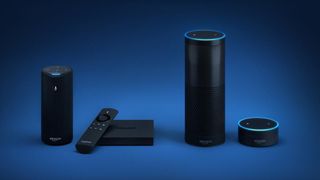How to Own the Connected Home
"For communications companies that already have a firm stake in the home through traditional offerings such as video, broadband and voice, an unprecedented opportunity is up for grabs. As the connected home market quickly expands, blazing the trail in the emerging landscape will become increasingly non-negotiable to incumbents’ future growth and survival." —Shuvankar Roy, Comcast; and Sumit Banerjee and Abhinav Saksena, Accenture Strategy
Over the past decade, connected technologies have evolved from an abstract idea into something woven into the fabric of our everyday lives. Whether it’s switching off a forgotten light with your smartphone or jumpstarting your home’s smart entertainment systems via a simple request to Alexa, connected devices enabled via technologies such as artificial intelligence are reshaping consumer experiences as we know them.

They’re also redefining the word ‘convenience.’ A recent Accenture Strategy study found that 56% of executives predict AI deployment will drive new growth and revenue opportunities. And nearly 6% say this revenue growth will come from increased consumer satisfaction and engagement.
Nowhere are these opportunities more apparent than in the connected home where, according to the U.S. Department of Labor, Americans spend more than half of their daily time. Today, products that once seemed futuristic are now common household items. There has been a 60% growth in smart speakers, while smart home products have increased by 41%. The future will see a collection of deeply integrated micro-ecosystems that will make the home intelligent, personalized and seamless.
For communications companies that already have a firm stake in the home through traditional offerings such as video, broadband and voice, an unprecedented opportunity is up for grabs. As the connected home market quickly expands, blazing the trail in the emerging landscape will become increasingly non-negotiable to incumbents’ future growth and survival.
Preparing for the Fight
In the fight to own the home, communications companies face an increasingly crowded and complex path ahead. Competition is fast expanding past traditional players to include Silicon Valley giants and other players looking for the next platform to reach consumers.
A wave of recent M&A activity — such as Amazon’s acquisition of Ring — underscores that both traditional and new entrants are recognizing the major value of the connected home market, and acting accordingly. In fact, Accenture Strategy research finds that 43% of companies cited the need for next-gen technology as a trigger for their M&A as they race to win over consumers with top-of-market digital offerings.
As communications companies face multiple headwinds, including shifting customer presences and cost pressures, they must rise to the challenge and best position themselves in the fight to win. By facing barriers head-on, embracing new business models, and looking outside the four walls of their organization, communications players have a major opportunity to become the dominant and holistic service providers in consumer homes.
Confronting Challenges
To start, communications companies should recognize where they have advantages to seize — for instance, familiarity among consumers in the home space, and an existing suite of home services — and where vulnerabilities remain. For one, the connected home market differs significantly from communication providers’ core products.

Many successful connected home products, such as Alexa and Nest Thermostat, are purchased through one-time sale — contrasting with the recurring subscription model typical of communications companies. This means communications companies will need to rethink their pricing models to reap the most benefit, while also finding ways to reduce cost-of-entry for consumers.
Another challenge facing incumbents is navigating a market built around product design and experience — features that haven’t been historically paramount to traditional communications providers’ offerings. To compete with companies such as Google and Amazon, who put product design at the core of their DNA, traditional companies need to accelerate investment in best-class product design and manufacturing, as well as transition culture and ways of working. Some companies are already making this shift in their business models — among them, Comcast, which is helping transform the video product experience with the release of X1.
In today’s day and age, companies also need to remember that they don’t always need to go it alone. In fact, doing so may prove to be a disadvantage. Instead, communications providers need to decipher how and where they want to participate in the connected home ecosystem, so they are best able to bolster traditional portfolios, bring differentiated offerings to market and reach new segments of consumers.
Accenture Strategy research has found that nearly half (44%) of executives across industries agree the value of ecosystems lays in access to new customers. As lines blur between industries, there are also new opportunities to partner with “frenemy” companies to create new integrated experiences and put down a lasting stake in the connected home experience.
The Path to the Finish Line
In an increasingly complex and crowded industry, there are several steps communications companies can take to stay ahead of the curve and own a connected home market share:
- Form an Integrated Strategy: Evaluate new opportunities in the context of traditional products and services, with an eye toward creating integrated service offerings that allow you to both dominate the old and win in the new. Create a refreshed home services aggregation strategy that defines a path forward for both defending core services and expanding to new revenue streams through digital offerings. Create new, holistic business and pricing models that give consumers a more seamless exchange on everything from user experience, service, billing and beyond.
- Shift Focus to Design and Experience: Refocus priorities to place design and experience at the forefront of service offerings, which is necessary for keeping up with Silicon Valley rivals and emerging players.
- Redefine your Role in the Broader Home Ecosystem: Ask yourself: what role should your company play in the broader — and rapidly expanding — connected home ecosystem? What gaps remain in your company’s capabilities, and where can a digitally savvy partner create a distinct advantage? Think outside your four walls to embrace non-traditional partners, including longtime rivals, to create differentiated product offerings, expand market share and provide best-in-class experiences to consumers.
- Embrace Data: Create an analytics strategy to power the home business. Ecosystems will soon evolve from value chain partnerships, in which each entity has a specific function, to information exchanges that drive new opportunities to leverage and monetize data. Through investments in analytics combined with strategic partnerships, companies can access rich data insights that enable them to better service customers and ultimately drive growth.
As connected devices become more ingrained into consumers’ everyday lives, the connected home space has grown to be a major market opportunity, creating a fierce battleground between traditional and emerging companies alike. If incumbent communications players develop bold visions, rethink long-held business models and make strategic bets today, they can find themselves victors in the connected home race of the future.
Shuvankar Roy is vice president of business operations at Comcast; Sumit Banerjee is managing director at Accenture Strategy; and Abhinav Saksena is a former managing director at Accenture Strategy.
Multichannel Newsletter
The smarter way to stay on top of the multichannel video marketplace. Sign up below.



